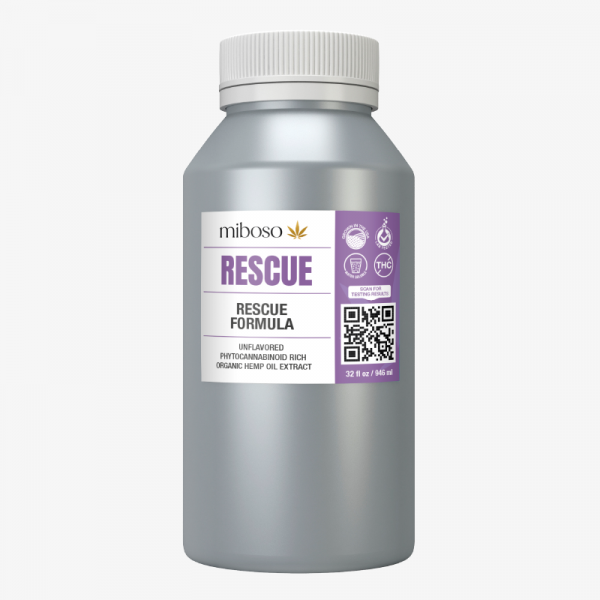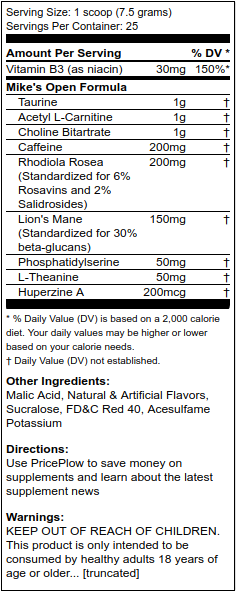

Proprietary blends are a common ingredient in various products, from supplements to skincare, but their exact makeup is often shrouded in mystery. This lack of transparency can leave consumers wondering: What am I really putting into my body? This article will delve into the mystery of proprietary blends, exploring what they are, why companies use them, and what this means for consumers. We’ll also discuss practical strategies to navigate this complex landscape and make informed choices. Prepare for a journey to understand the ingredients that are shaping your health and well-being.
What Are Proprietary Blends, Exactly?
Defining the Mystery
Proprietary blends are a mixture of ingredients whose exact composition is kept secret by the manufacturer. This secrecy is often justified by claims of trade secrets or unique formulations that provide benefits beyond what would be achievable through individual ingredients. The absence of specific ingredient lists can make it difficult for consumers to understand what they are ingesting. This ambiguity raises critical questions about transparency and consumer rights. Many consumers, health-conscious individuals in particular, are curious to know the exact contents of their supplements, skincare products, or other products containing proprietary blends.
The Role of Trade Secrets
Many companies argue that proprietary blends protect their trade secrets. The trade secret concept often hinges on the idea of uniqueness, where a specific combination of ingredients is perceived as having unique and beneficial synergistic effects that go beyond the sum of its individual components. This unique composition, in theory, is a key factor driving the demand and appeal of proprietary blend products.
The Consumer Perspective
However, this secrecy often fuels concerns among consumers. Lack of transparency raises legitimate questions regarding safety, efficacy, and quality control. Consumers are generally interested in understanding what they are ingesting, especially when their health is involved, motivating them to seek out more detailed information.
Unpacking the Reasons Behind Proprietary Blends
Marketing and Brand Building
One of the primary factors driving the use of proprietary blends is marketing strategy. Companies can tout the potential benefits of their proprietary blends without being obligated to specify the exact ingredients and their amounts, potentially driving sales by highlighting the mystery and exclusivity of the blend. This tactic can also create a sense of intrigue and exclusivity that attracts consumers.
Ingredients with Potential Synergies
Another possible reason is the belief in the synergistic effects of specific ingredient combinations. A blend might contain ingredients that work together to achieve a particular effect that is more potent or better than the individual ingredients alone. In theory, this synergy warrants a proprietary formula.
Protecting Unique Formulations
Finally, some companies resort to proprietary blends to protect unique formulations, keeping a competitive edge in the market. This approach might include combinations of unique ingredients not easily replicable by competitors. This strategy serves to safeguard the firm’s unique and potentially high-profit products from being easily copied.
Examining the Potential Impact on Consumer Health
Product Efficacy and Safety Concerns
The lack of ingredient disclosure regarding proprietary blends can lead to concerns about product efficacy and safety. Consumers want to ensure that the products they use align with their health and wellness goals. The lack of transparency regarding the exact contents of the blend can make it difficult for consumers to assess the safety and suitability of the product for their individual needs.
Long-Term Health Implications
The long-term impact of ingesting undisclosed ingredients within a proprietary blend remains uncertain. This lack of transparency presents a risk to consumer health, making informed decision-making challenging. Consumers are understandably concerned about potential adverse reactions or interactions with other medications or health conditions.
Transparency and Trust in the Market
Transparency is key to fostering trust between manufacturers and consumers. Consumers are more likely to trust products with clear ingredient lists and publicly disclosed formulas. Increased transparency could create a more sustainable and reliable market environment.
Navigating the Proprietary Blend Landscape
Understanding Your Choices
With the growing popularity of proprietary blends, consumers should proactively seek out information about the companies producing the product. Reviewing the company’s reputation, policies, and commitment to transparency is critical in making informed decisions. This approach enables consumers to make better choices, aligning products with their health goals.
Transparency as a Guiding Principle
Prioritizing transparency is a crucial step in navigating the world of proprietary blends. Seeking out products with more detailed ingredient lists empowers you to assess the potential benefits, risks, and interactions specific to your health conditions. This enables informed and conscientious choices.
Seeking Alternative Options
For individuals concerned about the potential risks associated with proprietary blends, there are alternative options available in the market. Many alternative products focus on transparency and clarity, offering ingredients with clear labeling and readily available information, fostering more informed consumer choices.
The Future of Proprietary Blends
Transparency and Ethical Sourcing
In the future, the use of proprietary blends is likely to be reviewed for its ethical impact on consumers, with more emphasis on transparency. Companies might be pressured to disclose the precise composition of their blends, boosting consumer confidence and trust in the marketplace. This will likely align with increasing pressure on companies to adopt ethical sourcing practices.
Alternative Solutions
Alternative solutions may emerge that emphasize clear and easily accessible ingredient lists. Products with detailed ingredient lists will likely gain popularity, fostering trust and offering consumers greater control over their health and wellness decisions.
Regulating the Market
Governments might introduce regulations to promote transparency in the production and sale of proprietary blends. These regulations might include stricter guidelines on labeling and disclosure requirements, influencing the industry to adhere to higher standards of transparency. This could ensure that consumers have access to reliable information and protect them from misleading claims.
The Role of Consumer Awareness
Consumers must play a vital role in promoting a more transparent market for proprietary blends. By actively seeking out products with detailed ingredient lists, expressing preferences for transparency, and supporting companies that prioritize clarity, they can drive positive change. This will encourage more ethical practices in the industry, ensuring consumers have access to the information needed for informed choices.
The Future of Consumer Choices
Consumers have more purchasing power than ever before. Consumers can significantly influence the marketplace through strategic purchasing decisions. This empowers consumers to reward transparency, fostering positive change in the marketplace. Active involvement in decision-making regarding proprietary blends is crucial for securing a more ethical and informed consumer market.
The importance of Healthy Habits
Healthy habits play a vital role in maintaining overall well-being, which goes beyond simply consuming products with known ingredients. Prioritizing a balanced diet, regular exercise, and stress management contribute to a well-rounded approach to health and wellness.
Additional Information about Blending
Various methods exist for blending ingredients to create desired effects. Different blends have distinct outcomes based on various factors. Understanding the different factors that can influence the effects of blending ingredients enhances consumer decision-making in choosing blends that align with their needs and health goals. Choosing blends consciously enhances consumers’ active role in making informed choices aligned with personal health and well-being.
Frequently Asked Questions
What are some of the main criticisms of proprietary blends?
One of the main criticisms of proprietary blends revolves around the lack of transparency regarding their ingredients. This lack of disclosure can raise concerns about safety, efficacy, and quality control. Consumers have legitimate questions about the potential health implications of consuming undisclosed ingredients, especially regarding interactions with other medications or pre-existing conditions. The ambiguity also undermines informed consumer choices.
How can consumers make informed decisions about products containing proprietary blends?
Consumers can make informed decisions by researching the company behind the product. Looking into their transparency policies, commitment to ethical sourcing, and overall reputation provides essential insight into the product’s integrity. Reviewing customer reviews and seeking out third-party verification can further support informed choices. Consumers should also be wary of potentially misleading marketing claims that do not correspond with available data or evidence.
In conclusion, understanding the mystery behind proprietary blends is crucial for informed consumer choices. By delving into the specifics of ingredients and manufacturing processes, consumers can make more educated decisions about the products they’re consuming. This deeper understanding empowers individuals to make healthier choices aligned with their personal values and health goals. Armed with this knowledge, you can approach your next purchase with greater confidence and a clearer understanding of what you’re truly consuming. Visit our website to discover more about the ingredients and transparency standards of your favorite brands.